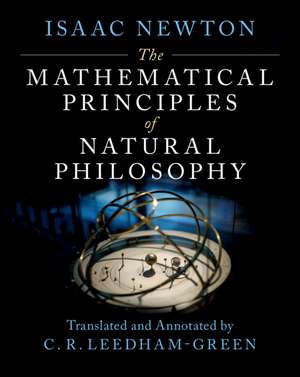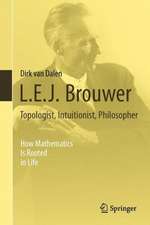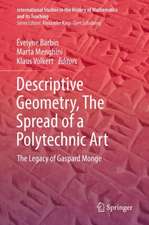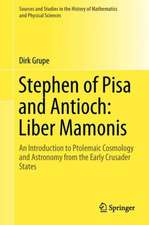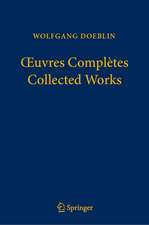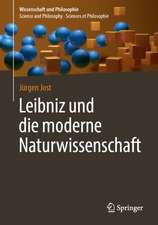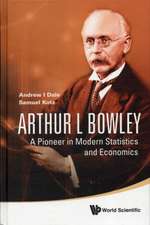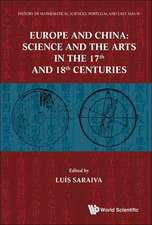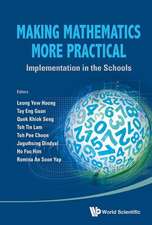The Mathematical Principles of Natural Philosophy
Autor Isaac Newton C. R. Leedham-Greenen Limba Engleză Hardback – 3 mar 2021
| Toate formatele și edițiile | Preț | Express |
|---|---|---|
| Paperback (3) | 139.87 lei 3-5 săpt. | |
| – | 139.87 lei 3-5 săpt. | |
| CREATESPACE – | 151.71 lei 3-5 săpt. | |
| Ockham Publishing – 28 iun 2022 | 143.20 lei 6-8 săpt. | |
| Hardback (1) | 1628.61 lei 3-5 săpt. | |
| Cambridge University Press – 3 mar 2021 | 1628.61 lei 3-5 săpt. |
Preț: 1628.61 lei
Preț vechi: 2115.08 lei
-23% Nou
Puncte Express: 2443
Preț estimativ în valută:
311.63€ • 325.37$ • 257.92£
311.63€ • 325.37$ • 257.92£
Carte disponibilă
Livrare economică 15-29 martie
Preluare comenzi: 021 569.72.76
Specificații
ISBN-13: 9781107020658
ISBN-10: 1107020654
Pagini: 790
Ilustrații: 270 b/w illus. 20 tables
Dimensiuni: 208 x 260 x 48 mm
Greutate: 1.81 kg
Editura: Cambridge University Press
Colecția Cambridge University Press
Locul publicării:New York, United States
ISBN-10: 1107020654
Pagini: 790
Ilustrații: 270 b/w illus. 20 tables
Dimensiuni: 208 x 260 x 48 mm
Greutate: 1.81 kg
Editura: Cambridge University Press
Colecția Cambridge University Press
Locul publicării:New York, United States
Cuprins
Definitions; The Axioms, or the Laws of Motion; On the Motion of Bodies, Book One: I.1. On the theory of limits, which is used to deduce later results; I.2. On the calculation of centripetal forces; I.3. On the motion of particles in eccentric conic sections; I.4. On the calculation of elliptical, parabolic, and hyperbolic orbits; I.5. On the calculation of orbits when neither focus is given; I.6. On the calculation of motion in given orbits; I.7. On the ascent and descent of particles in a straight line; I.8. On the calculation of the orbits in which particles revolve under any centripetal forces; I.9. On the motion of particles in moving orbits, and the motion of the apsides; I.10. On the motion of particles on given surfaces, and the swinging motion of a string pendulum; I.11. On the motion of particles attracting each other by centripetal forces; I.12. On the attractive forces of spherical bodies; I.13. On the attractive forces of non-spherical bodies; I.14. On the motion of particles attracted by centripetal forces towards the various parts of arbitrarily large bodies; On the Motion of Bodies, Book Two: II.1. On the motion of particles moving against a resistance that is proportional to the speed; II.2. On the motion of bodies moving against a resistance that is proportional to the square of the speed; III.3. On the motion of bodies to which the resistance consists of one part that is proportional to the speed, and another to the square of the speed; II.4. On the circular motion of bodies in resisting media; II.5. On the density and compression of fluids, and on hydrostatics; II.6. On the motion and resistance of string pendulums; II.7. On the motion of fluids and the resistance of projectiles; II.8. On motion propagated through fluids; II.9. On the circular motion of fluids; On Celestial Mechanics, Book Three: Introduction to Book Three; The Rules of Scientific Argument; Phenomena; Propositions; On the motion of the nodes of the moon; General Scholium; A. Mathematical notation and results assumed in The Principia; B. Calculus in The Principia; C. Newton's astronomy; D. Newton's theory of tides; E. Technical terms used in the translation; F. On Newton's style, and translating The Principia; G. Some difficult words; H. Astrological symbols; I. Glossary of Latin terms; J. Technological illustrations; References; Index.
Descriere
Heavily annotated translation of the third and final edition (1726) of Newton's Principia, designed for easy understanding of the text.
